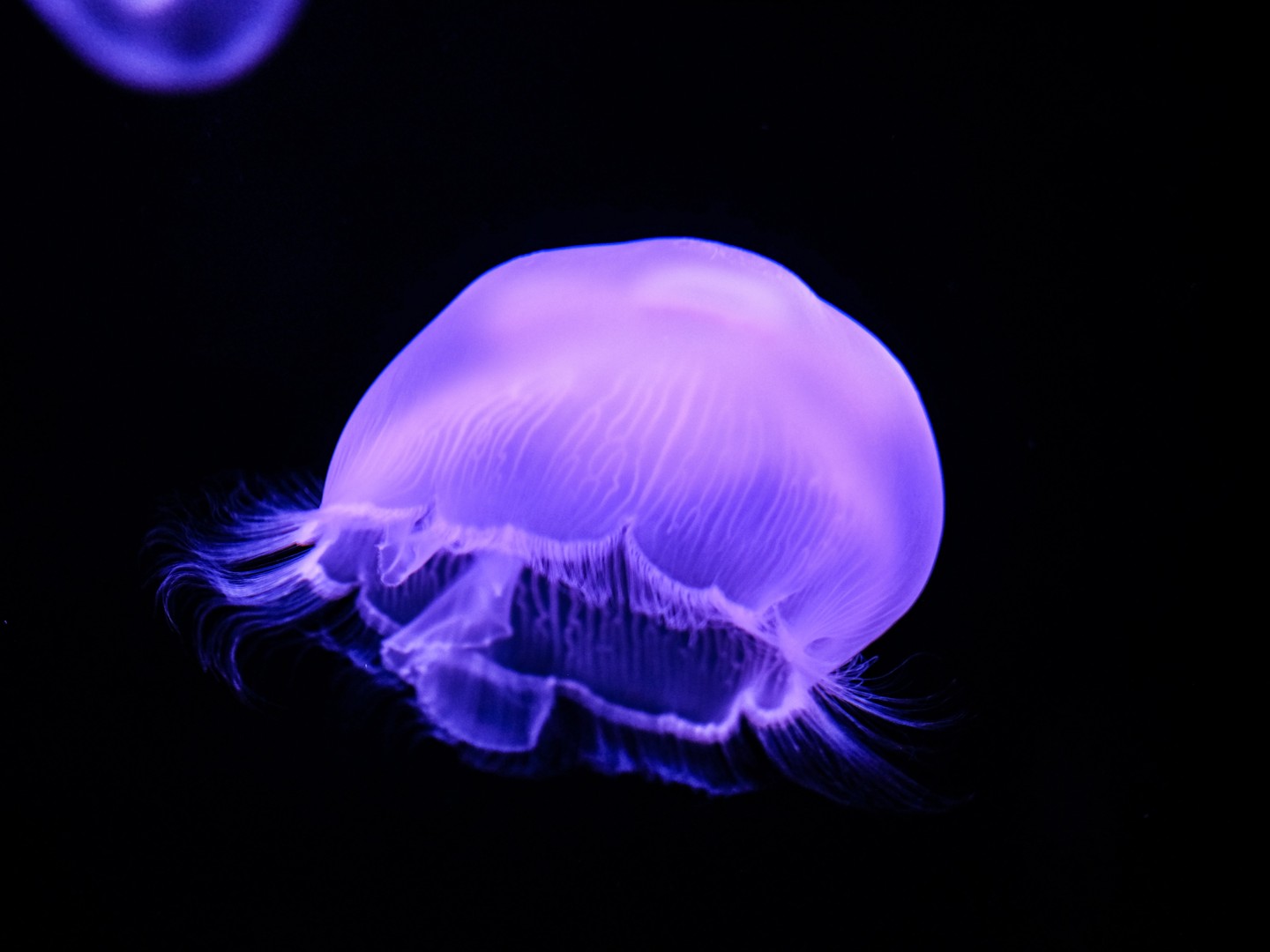- The life cycle of jellyfish from polyp to medusa
- The significance of jellyfish in marine ecosystems
- Techniques and methods for cultivating jellyfish
- The role of conservation in sustaining jellyfish populations
- The challenges and future prospects in jellyfish research and management
Jellyfish, often perceived as simple, gelatinous creatures, lead a complex life intertwined with ocean ecosystems. At our off-site facility, we’ve dedicated an entire area to raising jellies from polyps to full-grown medusas. Understanding their life cycle provides critical insights into their biology and ecological importance.
The life cycle of jellyfish is fascinating. It begins with the polyp stage, which is a sessile form that attaches to substrate in the ocean. Polyps reproduce asexually, budding off small ephyrae, which eventually develop into free-swimming jellyfish. This transformative journey is marked by several significant phases. The polyp can reproduce for years, creating multiple ephyrae during its lifetime. After a period of growth, the ephyrae mature into medusae, the free-floating adult stage of jellyfish. This shift represents a crucial transition, allowing jellyfish to occupy different niches and adapt to varying environmental conditions.
Jellyfish play vital roles in marine ecosystems. They are both predators and prey, forming integral components of food webs. As predators, jellyfish consume small fish and zooplankton, helping to regulate these populations. Concurrently, they serve as a food source for various marine species, including sea turtles and certain fish, contributing to the biodiversity and stability of oceanic life. Notably, some jellyfish species can absorb excess nutrients and carbon, thus aiding in the balance of oceanic ecosystems.
Cultivating jellyfish requires specific techniques and resources. The process begins with selecting healthy polyps, which are then transferred into specialized tanks. These tanks must replicate their natural environments, including temperature, salinity, and nutrient levels. The management of water quality is crucial, as jellyfish are sensitive to changes in their environment. Using filter-feeding systems, we provide small food particles that the jellies consume. Regular monitoring and adjusting of tank conditions promote optimal growth rates for the jellies, enabling us to efficiently transition them from polyps to their mature, adult forms.
Conservation efforts are essential for sustaining jellyfish populations. Many species are vulnerable to environmental changes, such as climate change and ocean acidification. Overfishing and habitat destruction further threaten their survival. Conservation strategies have become increasingly important, including habitat restoration and the establishment of marine protected areas. Awareness and education about jellyfish can help foster public support for these initiatives. Engaging with communities about the ecological roles of jellyfish encourages stewardship and responsible practices that can mitigate human impacts on marine environments.
The challenges faced in jellyfish research and management are numerous. One major obstacle is the unpredictability of jellyfish blooms, which can affect fishing and tourism industries. Understanding bloom dynamics requires extensive research into environmental triggers and biological processes. As we continue to learn about jellyfish biology and ecology, we can better predict these events and develop appropriate management strategies.
Future prospects in jellyfish research look promising. Advancements in technology, such as DNA sequencing and remote monitoring systems, are enhancing our understanding of these creatures. Research insights can lead to improved conservation measures as well as innovative applications in biotechnology. The study of jellyfish could inform our knowledge about broader oceanic health and resilience, marking them not just as simple organisms, but as indicators of marine well-being.
Growing jellyfish presents an opportunity to educate the public about marine conservation. It allows us to highlight their importance in ecosystems and the urgent need to protect their habitats. By fostering an appreciation for these creatures, we can inspire positive actions to safeguard our oceans.
In raising awareness about jellyfish and their developmental stages, we contribute to a larger understanding of marine biodiversity. Addressing the challenges they face is vital for future conservation efforts. Our commitment to these initiatives demonstrates the value of sustaining marine ecosystems and underscores the necessity for informed public engagement in environmental stewardship.
*****
Source Description
Would you believe we ‘grew’ these jellies? 💙 At our off-site facility, we have an entire area dedicated to raising jellies from polyps to full-grown jellies.


